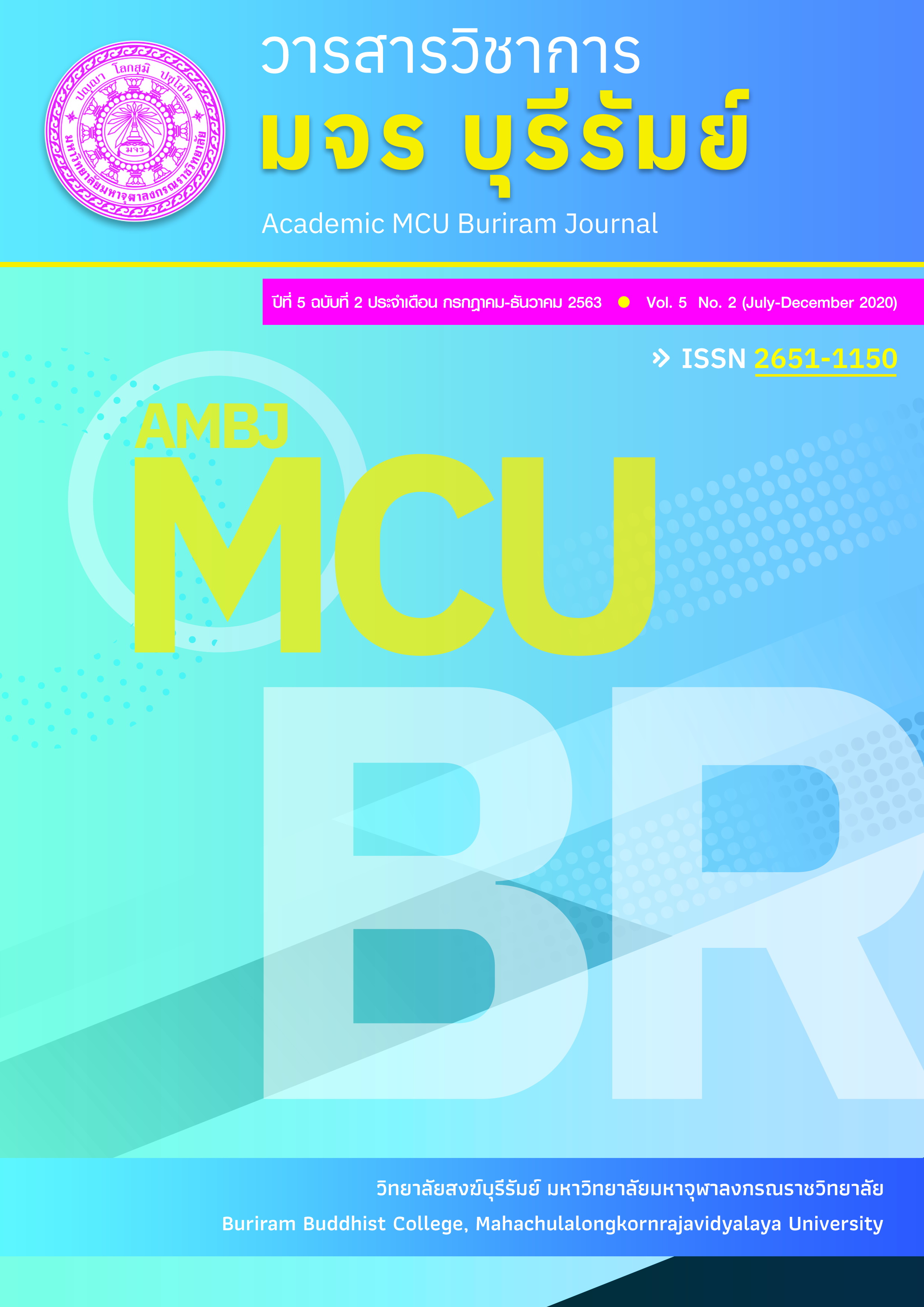The Symbol and Buddhist Ritual of Communities in South Isan: Form, Development, and Ethical Value
Keywords:
Symbols, Ritual, Buddhism, Communities in South IsanAbstract
The objectives of the research article are 1) to study the symbols and Buddhist Rituals of people in South Isan Province. 2) to study on the process of symbolization and Buddhist Rituals of people in South Isan Province, and 3) to criticize on forms, development and ethical value of Buddhist symbols in South East Province under which qualitative methodology was used. There are the interview of key performant consisting an analysis
The findings were as follows:
Symbols and religious rituals communities in the South Isan, consisting of Nakhon Ratchasima, Buriram and Ubon Ratchathani by using the ritual framework according to the 12 tradition of Isan people found symbols in 3 types of Buddhist rituals, including 50 samples of symbols collected, divided into 36 signs for material symbols. , 8 signs for symbol of action, and 6 signs for symbol of thought.
The symbolization process on Buddhist rituals of the communities of the South-East Isan Province found the process of creating symbols and rituals of two kinds: 1) symbols that are directly based on Buddhism. These symbols occurred in the community through the continuous flow and can be linked to the belief system that exists in the scriptures, commentary or other streams of thought due to the Buddhist culture 2) Symbols based on traditional beliefs in the community. The symbols were created in accordance with this idea can be retraced in traditional beliefs that appear in scriptures, scriptures, or commentaries that have nothing to do with Buddhist teachings, but they were used to serve Buddhist traditions or rituals based on the traditional beliefs of people. They regarded as local wisdom which has its own characteristics.
The symbolic form of Buddhist rituals was developed sequentially through the time and belief framework of the era. The pattern was adjusted according to the era until becoming a unique symbol of the era to the needs of people in society in various dimensions both in ways of respect and faith, holiness, protection, and fortune. Therefore, the values arising from these symbols are various dimensions as well, allowing to see one fact that Buddhism, when entering to the way of life of the local people, it will be modified to the needs of the local people as well.
References
มหาจุฬาลงกรณราชวิทยาลัย. (2535). พระไตรปิฎกภาษาไทย ฉบับมหาจุฬาลงกรณราช วิทยาลัย. กรุงเทพมหานคร: มหาวิทยาลัยมหาจุฬาลงกรณราชวิทยาลัย.
มหามกุฎราชวิทยาลัย. (2553). พระไตรปิฎกและอรรถกถาแปล ชุด 91 เล่ม. กรุงเทพมหานคร: มหามกุฏราชวิทยาลัย.
คณะกรรมการฝ่ายประมวลเอกสารและจดหมายเหตุ. (2542). วัฒนธรรม พัฒนาการทางประวัติศาสตร์ เอกลักษณ์ และภูมิปัญญา จังหวัดสุโขทัย. กรุงเทพมหานคร: คณะกรรมการฝ่ายประมวลเอกสารและจดหมายเหตุใน คณะอำนวยการจัดงานเฉลิมพระเกียรติพระบาทสมเด็จพระเจ้าอยู่หัวฯ จัดพิมพ์.
พิเศษ เจือจันทร์พงษ์. (2550). ประวัติศาสตร์เมืองสุรินทร์. กรุงเทพมหานคร: กรมศิลปากร.
เอกวิทย์ ณ ถลาง. (2546). ภูมิปัญญาอีสาน. กรุงเทพมหานคร: อมรินทร์.
วิมล จิโรจนพันธ์. (2551). มรดกทางวัฒนธรรม “ภาคตะวันออกเฉียงเหนือ” กรุงเทพมหานคร: สำนักพิมพ์แสงดาว.
วรรณภา ศรีธัญรัตน์. (2540). ทฤษฎีปฏิสัมพันธ์สัญลักษณ์: การประยุกต์ใช้. ขอนแก่น: มหาวิทยาลัยขอนแก่น.
SSign and Symbol. สืบค้นจาก https://www.oxfordlearnersdictionaries.com
(11 พฤศจิกายน 2563).
Downloads
Published
How to Cite
Issue
Section
License
ทัศนะและความคิดเห็นที่ปรากฏในบทความวารสารฉบับนี้ถือเป็นความรับผิดชอบของผู้เขียนบทความนั้น ไม่ถือเป็นทัศนะและความรับผิดชอบของบรรณาธิการ





